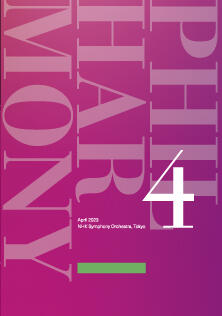- Home
- Concerts
- Subscription Concerts 2022-2023
- Program C
- No. 1981 Subscription (Program C)
No. 1981 Subscription (Program C)
NHK Hall
Google Map Seating Chart
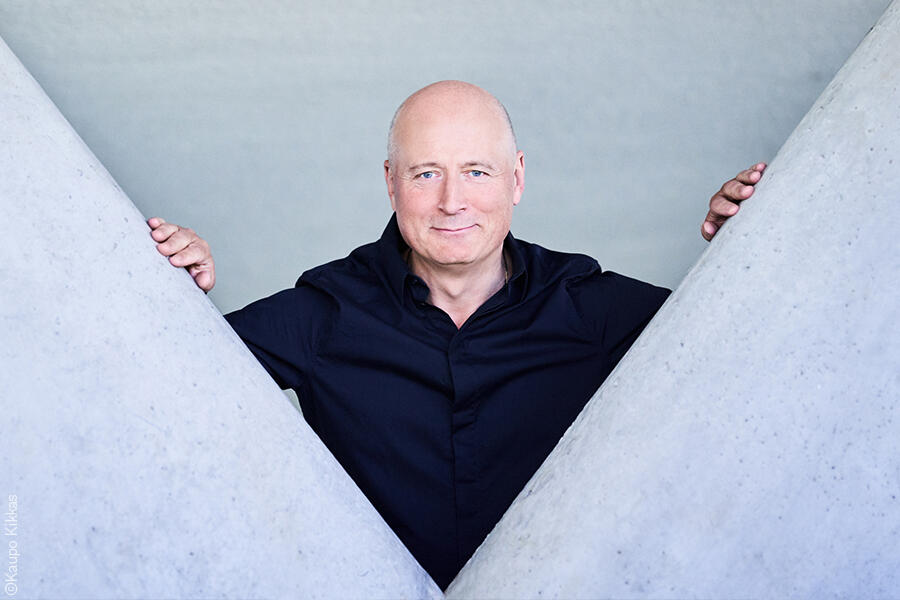
Program
Roussel / Sinfonietta for String Orchestra Op. 52
Contemporary of Claude Debussy (1862–1918) and Maurice Ravel (1875–1937), the French composer Roussel received a fully-fledged musical education only after leaving the Navy at age 25, though he had displayed his extraordinary musicality from childhood. His style was first affected by the Impressionism before showing the neo-Classical tendency: at any rate, Roussel’s originality had always resided in his rather horizontal, linear mindset (he was a renowned professor of counterpoint) and powerful rhythms.
First performed in 1934 in Paris, Sinfonietta (meaning "little symphony") is from Roussel's mature period. He composed the second and third movements first, then the opening. This is possibly how he assured the structural symmetry with the outer movements of the same duration. The fast-slow-fast movement arrangement recalls us of symphonies by early-Classical composers such as C. P. E Bach (1714–1788), J. S. Bach's son. Roussel's first movement is a vigorous D-minor sonata. Without preamble, violins give the punchy first
theme which contrasts well with the slower melodious second theme introduced by violas. The graveness of the middle movement is suddenly replaced by the liveliness of the D-major finale in rondo form having a sonata-like thematic dualism.
[Kumiko Nishi]
Poulenc / Sinfonietta
The Paris-born composer Poulenc was a favorite of the times during the inter-war years: he was only twenty when "Les Six" was formed in 1919. This avant-garde group consisted of Poulenc and five young composers admiring Erik Satie (1866–1925). The motto was to be simple, clear and light against all sorts of German late-Romantic excess: their output was often playful and spiced up with popular elements particularly from jazz, "music hall" (vaudeville theater) and cabaret. These features and the image of "Les Années folles" (Roaring Twenties) tag along with Poulenc's overall creation even today, however, he actually departed from this early phase without delay to go his own way within the neo-classical framework, burnishing his
musical wittiness, lucidity and, so to speak, urbane lyricism and melancholy.
He wrote Sinfonietta in 1947 on a commission from the BBC reusing materials of his discarded string quartet (composed in 1945–1947). This is not a “small” symphony like
Roussel's Sinfonietta, at least in respect of the length and the orchestral size: the title's humble suffix might be to secure itself against undeserved criticism for the absence of Beethovenian minute motivic/thematic development and firmly-structured form that the term "symphony" evokes. The first movement in G minor is a free sonata with a frequent change of meter and key. The serious first theme bursts into flame on strings at the beginning and the second theme, tinged with melancholy, is soon sung by the winds. The next movement is a lighthearted F-major scherzo in A–B–A form. Following the exquisitely melodious third movement in A-flat major, the F-major finale headed "Prestissimo et très gai" (very fast and very joyful) offers a Haydnesque rondo crammed with various moods. The make-believe gorgeous coda
with harp is ended by an abrupt waggish goodbye.
[Kumiko Nishi]
Ibert / Divertissement for Chamber Orchestra
The French composer Ibert is known for his inspired orchestral piece Escales (Ports of Call) (1922), Flute Concerto (1933) and numerous film scores. His Divertissement (Divertimento) (1930) is a suite based on his incidental music for the 1929 production of Un chapeau de paille d'Italie (The Italian Straw Hat) (1851). This French comedy written by Eugène Labiche (1815–1888) has been staged regularly and adapted many times for the screen, an example of which is René Clair's silent movie (1927). The hero is Fadinard, a man on the road horseback to his house to prepare his wedding. Halfway, his horse eats an Italian straw hat hung on a tree. It belongs to a married woman flirting with her lover behind a bush, so she insists on Fadinard finding an identical one for fear her husband discovers her affair. Fadinard's search for a hat is hilariously hampered by his wedding attendees upon his heels…
Divertissement sounds sometimes low-grade purposefully for the comic effect while it keeps up the elegance, characteristic of the composer. The high-spirits of Introduction are accentuated by the brass and percussion. The anxious flute melody opens Procession during which a drum roll leads to a parody of Mendelssohn's Wedding March. The eerie Nocturne is followed by Waltz, a caricature of Viennese waltz redolent even of The Blue Danube, where the heavy-footed brass overplay the facetiousness. After the Parade approaches gradually, gives festive tunes and leaves gradually, Finale starts with a higgledy-piggledy piano cadenza. The whistle suggests the wedding attendees in wild confusion marched off to the police station before the suite ends in an uproar.
[Kumiko Nishi]
*This concert will have a duration of 60 to 80 minutes without an interval.
Artists
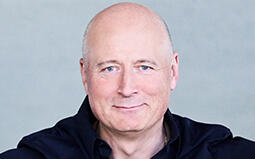 ConductorPaavo Järvi
ConductorPaavo Järvi
Paavo Järvi is from a musical family, his father being the famous conductor Neeme Järvi and his brother Kristjan is also a conductor. He has continuously held important positions directing renowned orchestras around the world, including the Cincinnati Symphony Orchestra, the Frankfurt Radio Symphony Orchestra and the Orchestre de Paris. He is currently Music Director of the Tonhalle Orchestra of Zurich. He was Chief Conductor of the NHK Symphony Orchestra from September 2015 to the 2021–22 season, and has been Honorary Conductor since September last year. He has also contributed to the development of classical music in Estonia, his homeland. It was with his performances of Beethoven symphonies that he first received worldwide acclaim, in his Beethoven Project with the Deustche Kammerphilharmonie Bremen of which he has been Artistic Director since 2004. His particular style, which combines an energetic pace with perfect articulation and powerful intonation, has been so innovative that set a new standard of Beethoven performance in the 21st century. However, it can also be said that he is a conductor who has built up a vast range of repertoire by having a flexible outlook. His approach to music, leaning towards clear sonorities and depicting the overall picture in just right way, may give an indication of where music of this global era should be. His musicality which can be described as a cosmopolitan style has resonated well with the NHK Symphony Orchestra, thus he and the orchestra have continued to display the essence of a wide range of works from the late Romantic period to the modern and contemporary eras as well as hidden Estonian works and Takemitsu with exquisite ensemble in sharp contrast. On this visit, he will conduct three attractive programs—one featuring R. Strauss works, which has been postponed since May 2020, as well as those with Scandinavian, Russian and French repertoire.
[Paavo Järvi by Mitsunori Eto, music critic]
Pre-concert Chamber Music Performance
Pre-concert Chamber Music Performance
Program:Ravel / String Quartet in F Major - 1st Movement
Artists
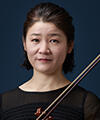
Shirabe Aoki
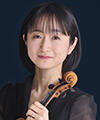
Maiko Saito
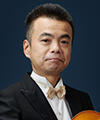
Shigetaka Obata
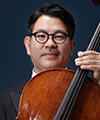
Ken’ichi Nishiyama
Download
Ticket
Program C
No. 1981 Subscription (Program C)
NHK Hall
Google Map
Seating Chart
Single Tickets Release Date
Pre-sales for Subscribers:Wednesday, March 1, 2023
*about subscribers
Sale to General Public:Sunday, March 5, 2023
Price
| S | A | B | C | D | E | |
|---|---|---|---|---|---|---|
| Ordinary Ticket | 7,400 | 6,500 | 5,200 | 4,200 | 3,200 | 1,600 |
| Youth Ticket | 3,500 | 3,000 | 2,400 | 1,900 | 1,400 | 800 |
Seating chart Enlarge Print PDF
*tax included
*About Youth tickets (Available at N-Kyo Guide)
*Subscribers receive a 10% discount (Available at NHKSO WEB Ticket and N-Kyo Guide)
*For wheelchair-accessible seats, please refer to the N-Kyo Guide
Starting Dates of Ticket Sales
ANNUAL SUBSCRIPTION TICKETS Mon., July 18, 2022 11:00am
[For Subscribers: Thu., July 14, 2022 11:00am]
SEASONAL SUBSCRIPTION TICKETS (SPRING) Fri., Feb. 17, 2023 11:00am
[For Subscribers: Thu., Feb. 14, 2023 11:00am]
Youth Tickets
Youth Tickets are great options for those of 25 years old and younger
WEB Select 3 Plus
Choose three or more of your favorite concerts and get a discount on single tickets
*Only available at NHKSO WEB Ticket NHKSO WEB Ticket (Accesible from Japan only)
For further information and subscription application
N-Kyo Guide TEL:0570-02-9502

